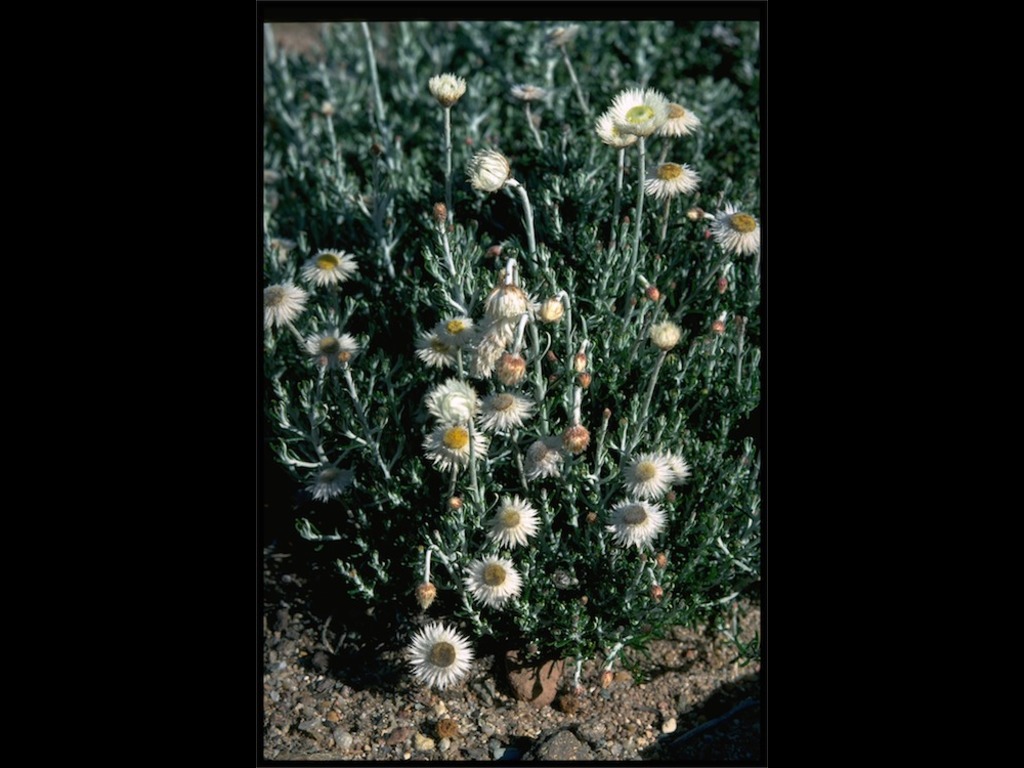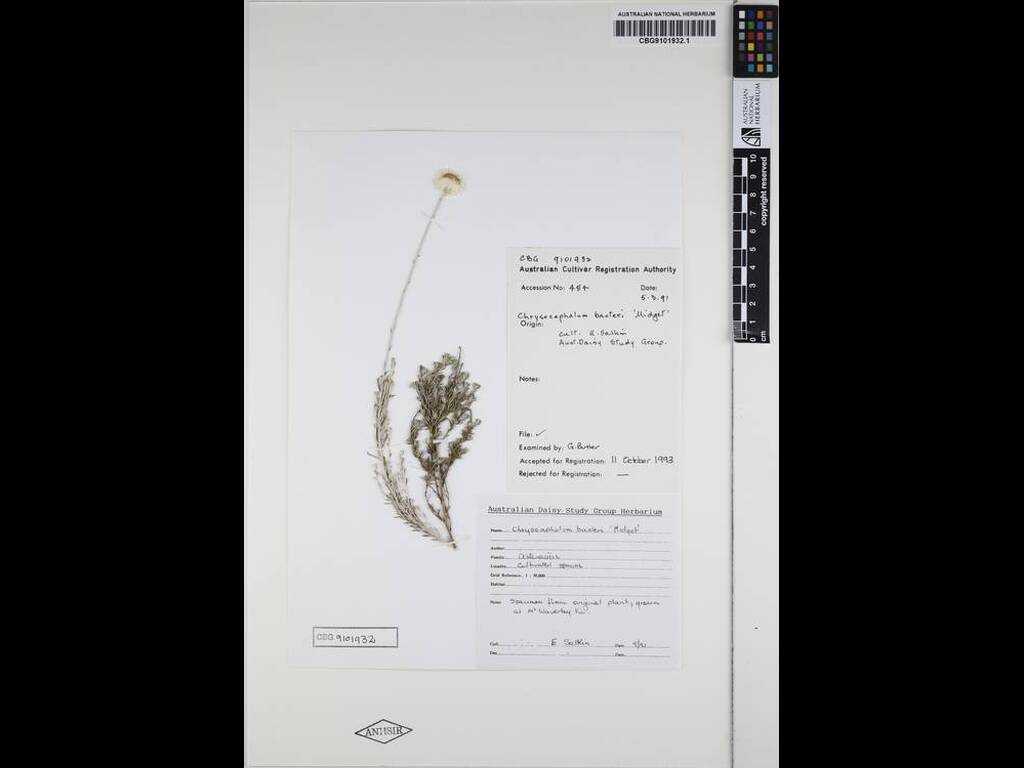Chrysocephalum baxteri 'Midget'
- File Number
- 484
- ACRA Field Book Number
- 499
- Registration Date
- 10/10/1993
- Application Received
- 01/12/1990
- Family
- Asteraceae
- Cultivar Name
- Chrysocephalum baxteri 'Midget'
- Origin
- Chrysocephalum 'Midget' arose as a chance seedling in a batch of seed of Chrysocephalum baxteri collected near the summit of Mt Oberon, Wilson's Promontory, Victoria. The seed was collected by A. Salkin in 1986 or 1987. The seedling was selected by Esma Salkin. The cultivar was first received by the Authority in December 1990. Registration applied for by the Australian Daisy Study Group, Mt Waverley, Victoria.
- Characteristics
- Leafy, compact, low shrub, 15cm high by 30cm wide, with very small white everlasting flowerheads with yellow discs. As the shrub matures it develops woody basal stems. Leaves 1.5-4mm long by 0.75mm wide, alternate, sessile, recurved, apex obtuse. Upper surfaces of leaves glabrous, lower surface tomentose, flowering stem 5-7cm long, flowerhead 10-15mm across. The rays are fringed. Flowerheads are solitary and terminal. Flowering period is spring followed by a brief second period of blooms in January when flowerheads are smaller. Outer involucral bracts are tan in colour. Diagnosis: This cultivar has all the characteristics of the usual forms of C. baxteri but is distinguished by the diminutive size of all the characters of the plant - leaves, rays, flowerhead and fruit.
- Cultivation
- The cultivar has not been tested for drought conditions. It has been mainly tested as a pot plant in Melbourne over 4-5 years. It does not tolerate excessively open cold and wet conditions. At Shepparton, Victoria, it has been trialled in a garden. It is growing in a sheltered north-westerly aspect. This region is subject to severe frosts. Maintenance is minimal, slow release fertiliser is used twice annually and all dead branchlets are pruned off. The seed head is attacked by insects. Reproduction must be by vegetative means to preserve the cultivar form.
- Publication
- Payne, W.H. (1994), Cultivars from Wildflowers. Australian Plants 17(140): 374
- Colour Coding
- RHS Colour Chart 1966: bracts: White Group 155A, florets: Yellow-Orange Group 17C; leaf (upper surface):Green Group 141Bleaf (lower surface): Greyed-Green Group 190Dinvolucral bracts: Greyed-Orange Group 172C
- Propagation
- Cuttings
- Applicant Name
- Australian Daisy Study Group
- Uses
- Small herbaceous shrub suitable for mass planting or mixed in a shrubbery.
- Availability
- -
- ANBG Accession Numbers
- ACC484, CBG9101932
- NSL ID
- -

